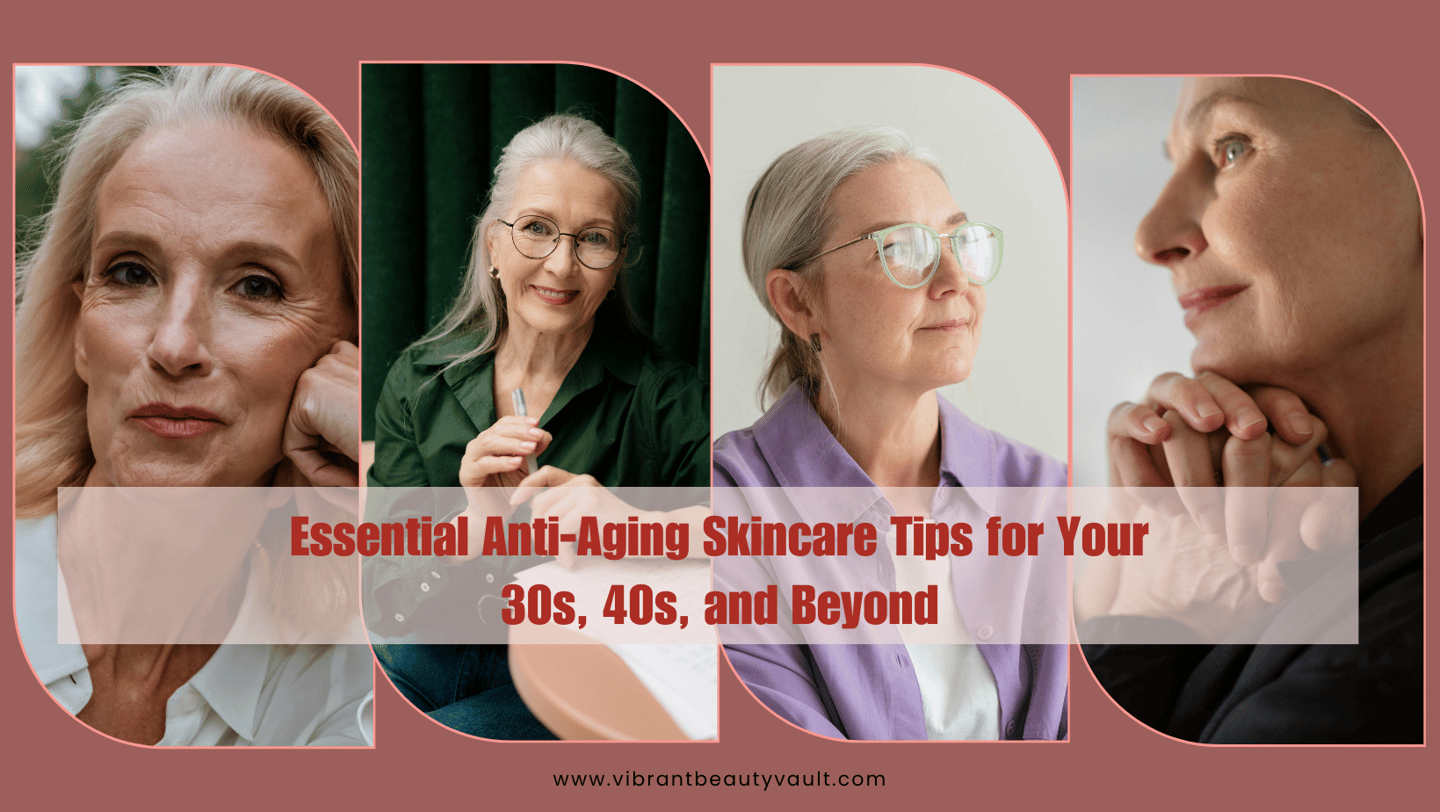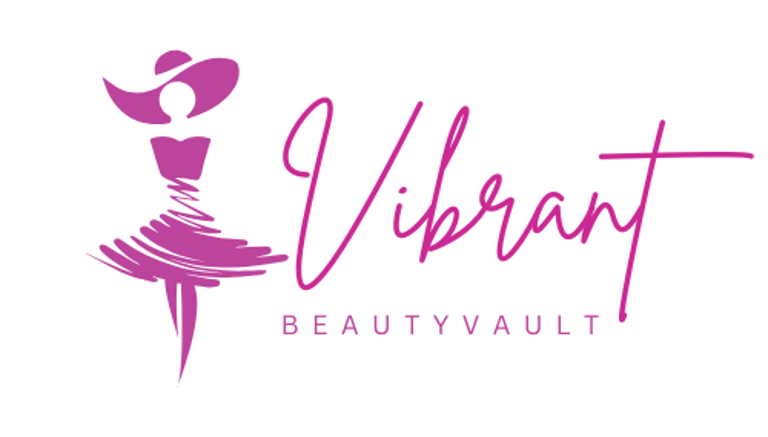Essential Anti-Aging Skincare Tips for Your 30s, 40s, and Beyond


Aging is a natural process, and while we can’t stop it, we can take steps to age gracefully and maintain healthy, radiant skin at every stage of life. Your skincare needs evolve as you age, so it’s essential to tailor your routine to your skin’s changing requirements. Here are the best anti-aging skincare tips for your 30s, 40s, and beyond.
In Your 30s: Prevent and Protect
Your 30s are a critical time to establish a solid anti-aging skincare routine. This is when the first signs of aging, such as fine lines and dullness, may start to appear due to a decrease in collagen production and slower skin cell turnover.
1. Prioritize Sunscreen
Sun damage is the leading cause of premature aging. Use a broad-spectrum sunscreen with SPF 30 or higher daily, even on cloudy days or indoors. Look for formulas with added antioxidants like vitamin C to protect against free radicals. Reapply every two hours if you’re spending time outdoors. Don’t forget often-overlooked areas like your neck, hands, and ears, as these areas are also prone to sun damage.
2. Start Using Retinoids
Retinoids, derived from vitamin A, are a powerhouse ingredient for preventing fine lines and boosting collagen production. Start with a low concentration and use it 2-3 times a week to allow your skin to adjust. Gradually increase the frequency as your skin builds tolerance. If retinoids cause dryness or irritation, apply a moisturizer immediately after to minimize side effects.
3. Incorporate Antioxidants
Antioxidants like vitamin C and E combat oxidative stress and brighten your skin. Use a vitamin C serum in the morning to enhance your sunscreen’s effectiveness and protect against environmental damage. Choose stable formulations with L-ascorbic acid for maximum potency. Pair it with ferulic acid for added stability and benefits.
4. Hydrate and Moisturize
As skin starts to lose moisture in your 30s, opt for hydrating ingredients like hyaluronic acid and glycerin. These humectants draw water into the skin, keeping it plump and smooth. Layer a lightweight hydrating serum under your moisturizer to lock in moisture. For added protection, choose a moisturizer with ceramides to strengthen the skin barrier.
5. Invest in Eye Cream
The delicate skin around your eyes is often the first to show signs of aging. Choose an eye cream with peptides or caffeine to reduce puffiness and prevent fine lines. Apply it gently using your ring finger to avoid tugging at the skin. For added benefits, store your eye cream in the fridge for a cooling effect that reduces morning puffiness.
In Your 40s: Repair and Replenish
In your 40s, hormonal changes can lead to thinner skin, loss of elasticity, and deeper wrinkles. This decade calls for more intensive care and reparative ingredients.
1. Upgrade Your Retinoid
If you’ve been using over-the-counter retinol, consider upgrading to a prescription-strength retinoid for more noticeable results. These stronger formulations can help reduce wrinkles, improve skin texture, and even out skin tone. Always use retinoids at night and follow up with sunscreen during the day to protect your skin.
2. Focus on Hydration
As estrogen levels drop, skin may become drier. Use a richer moisturizer containing ceramides, squalane, or shea butter to restore the skin’s barrier and lock in hydration. Look for products labeled “intensive” or “deep hydration” for mature skin. Night creams with ingredients like niacinamide can also help reduce redness and improve moisture retention.
3. Add Peptides to Your Routine
Peptides are amino acids that help rebuild and repair skin by stimulating collagen production. Look for serums or creams with peptides to improve firmness and elasticity. Copper peptides, in particular, are known for their ability to heal and regenerate the skin, making them a great addition to your routine.
4. Exfoliate Regularly
Slower cell turnover can make skin look dull. Use gentle chemical exfoliants like glycolic or lactic acid once or twice a week to reveal brighter, smoother skin. Avoid over-exfoliating, as it can damage the skin barrier. If you have sensitive skin, opt for milder formulations with polyhydroxy acids (PHAs).
5. Treat Hyperpigmentation
Sunspots and uneven skin tone become more prominent in your 40s. Ingredients like niacinamide, arbutin, and kojic acid can help fade dark spots and even out your complexion. Consider using a brightening serum in the morning and a retinoid at night for a comprehensive approach to pigmentation.
In Your 50s and Beyond: Nourish and Restore
As you enter your 50s and beyond, your skin becomes thinner and more prone to dryness and sensitivity. The focus should be on nourishment, repair, and maintaining a youthful glow.
1. Embrace Richer Formulas
Switch to deeply hydrating creams and oils that cater to mature skin. Look for products containing ingredients like hyaluronic acid, ceramides, and fatty acids to replenish lost moisture. Night creams with ingredients like bakuchiol, a gentler alternative to retinol, can provide anti-aging benefits without irritation.
2. Use Growth Factors
Growth factors are proteins that stimulate cell regeneration and collagen production. Incorporating products with growth factors can help repair damaged skin and improve elasticity. These are especially effective when used in conjunction with microneedling or other in-office treatments.
3. Protect Your Skin’s Barrier
As your skin becomes more delicate, focus on protecting its barrier. Avoid harsh cleansers and opt for creamy, non-foaming formulas that cleanse without stripping moisture. Use toners with soothing ingredients like chamomile or aloe vera to calm irritation.
4. Address Sagging Skin
Loss of collagen and elastin can lead to sagging skin. Look for products with ingredients like DMAE (dimethylaminoethanol) or firming creams with collagen-boosting properties. Facial massages and tools like gua sha or jade rollers can also help improve circulation and temporarily lift the skin.
5. Consider Professional Treatments
Non-invasive treatments like laser therapy, microneedling, or radiofrequency can provide noticeable improvements in skin tone and texture. Consult a dermatologist to explore options tailored to your skin’s needs. Treatments like fillers or Botox can also help reduce the appearance of deep wrinkles and restore volume.
Universal Anti-Aging Tips for All Ages
While each decade has specific skincare needs, some practices are universally beneficial:
Stay Hydrated: Drink plenty of water to keep your skin hydrated from within. Add herbal teas or water-rich foods like cucumbers and watermelon to your diet for extra hydration.
Get Enough Sleep: Sleep is essential for skin repair and regeneration. Aim for 7-9 hours of quality sleep each night, and use a silk pillowcase to reduce friction and prevent wrinkles.
Eat a Balanced Diet: Include foods rich in antioxidants, healthy fats, and vitamins to support healthy skin. Omega-3 fatty acids from fish or flaxseeds can improve skin elasticity, while vitamin C from citrus fruits boost collagen production.
Manage Stress: Chronic stress can accelerate aging. Practice relaxation techniques like yoga, meditation, or deep breathing exercises to lower cortisol levels and protect your skin.
Avoid Smoking and Excessive Alcohol: Both can dehydrate your skin and contribute to premature aging. Smoking also reduces blood flow, depriving your skin of oxygen and nutrients.
A consistent and well-rounded skincare routine can help you maintain youthful, glowing skin at any age. By understanding your skin’s evolving needs and using the right products and techniques, you can embrace the aging process with confidence and grace.
